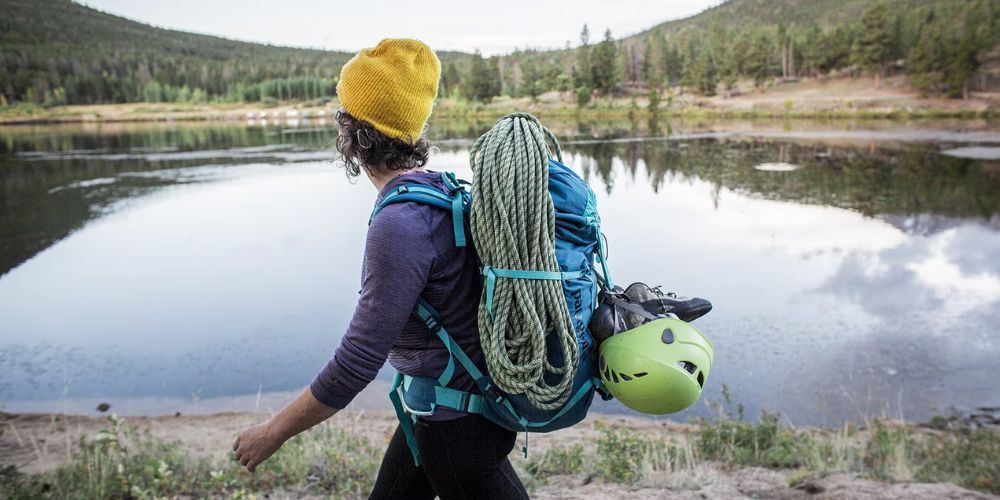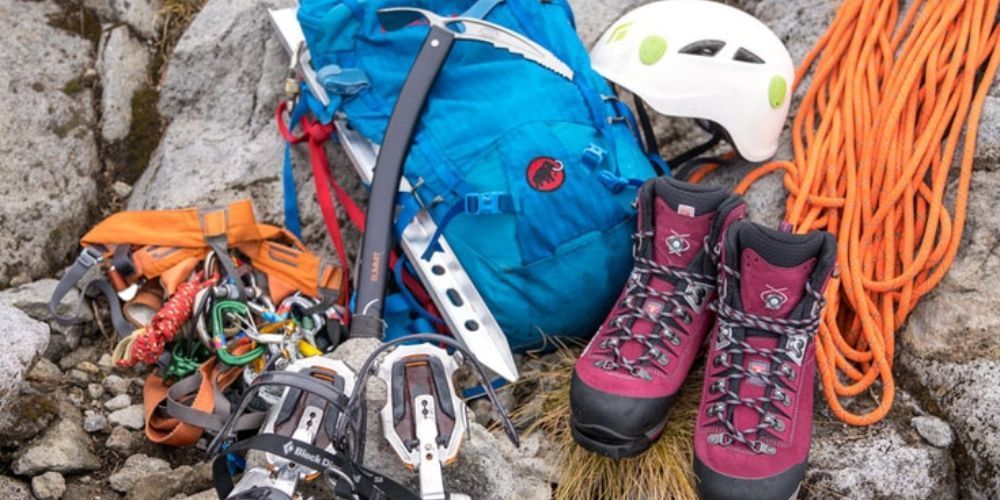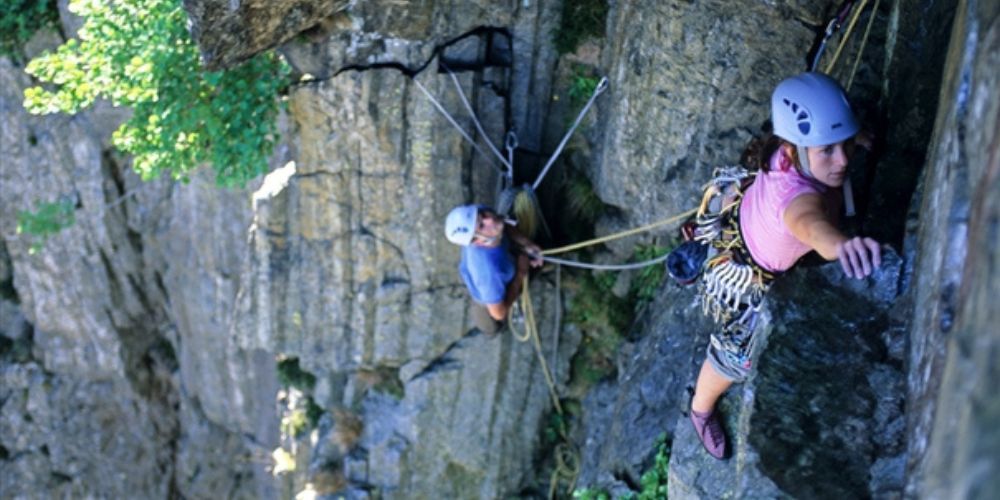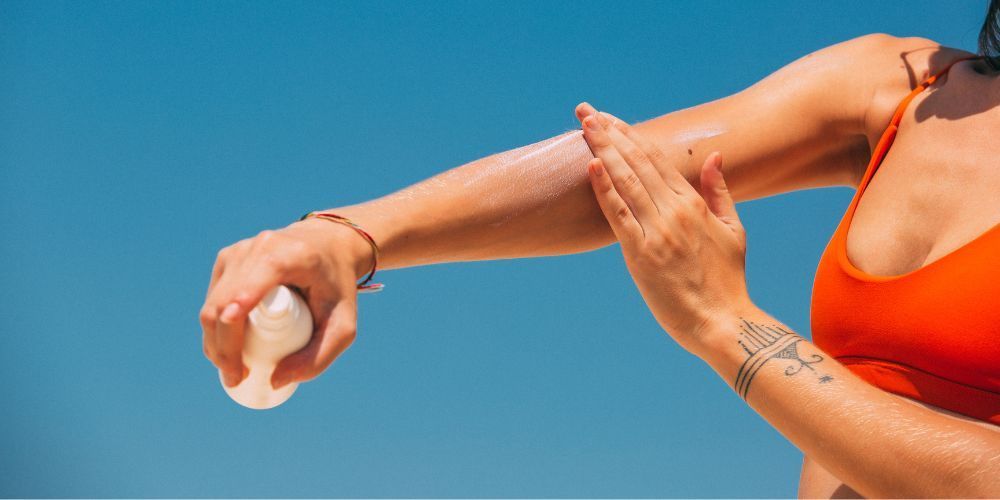Rock Climbing Trip Essentials: A Complete Packing Checklist
September 6, 2024
Embarking on a rock climbing trip is always filled with anticipation and excitement. Yet, it’s easy to feel overwhelmed when thinking about what to pack to ensure both safety and enjoyment. Every adventurer knows that one forgotten item can make all the difference between a thrilling climb and a stressful experience.
To conquer this challenge, compiling a detailed checklist is your best ally. By focusing on crucial gear, clothing suited for various weather conditions, and personal necessities, you can confidently prepare for any situation. We've meticulously researched and tested these recommendations, integrating insights from experienced climbers and countless outdoor expeditions. With this guidebook in hand, let's dive deeper into building your ideal packing list, beginning with categorizing your essentials for optimal organization.
When packing for a rock climbing trip, be sure to include essential gear such as ropes, carabiners, harness, helmet, and climbing shoes. Personal basics like sunscreen, first-aid supplies, and water bottles are also crucial. Additionally, consider bringing headlamp with extra batteries, insect repellent, and a multifunction watch for safety and convenience. Always refer to our comprehensive checklist to ensure you have everything needed for a successful climbing adventure.

Packing Essentials for a Rock Climbing Trip
Packing for a rock climbing trip is akin to preparing for a complex mission. Each piece of equipment, clothing, and personal necessity plays a significant role in your safety and success as you scale those breathtaking rock formations. So let's break this down into steps to ensure you're fully prepared.
Step I – Create a Comprehensive Checklist
Now, creating a comprehensive checklist is not just about writing everything down—it's about envisioning your entire experience from start to finish. First, list all the items you'll need, including your gear, clothing, safety equipment, food and water, and personal items. This checklist acts as your lifeline—ensuring that no essential item is left behind. It's your safety net, guaranteeing that you have everything you need for a safe and enjoyable climbing adventure.
Step II – Categorize Items
Then comes categorizing the items on your checklist. By dividing them into categories such as climbing gear, clothing, safety equipment, food and water, and personal items, you're making the organization more manageable. Imagine knowing exactly where to find that one essential piece of gear in your backpack without having to rummage through it at the last moment. Categorization streamlines your preparation process, helping you access items more efficiently when you need them the most.
Step III – Consider Your Destination
Researching your climbing destination is crucial in adjusting your packing list accordingly. Different climbing locations have specific requirements and weather conditions that directly impact the gear and clothing you should bring with you. If you're heading towards a colder location or a place with unpredictable weather patterns, extra insulation and waterproof layers might be necessary. Understanding these factors will help you tailor your packing list to match the unique demands of the environment you'll be entering.
By following these steps and considering every aspect of the climbing journey—from meticulous categorization to destination-specific adjustments—you're setting yourself up for a successful and well-prepared rock climbing experience.
As we've primed our understanding of how pivotal preparation is for a safe and rewarding climb, it's now time to equip ourselves with the must-have gear necessary to conquer those towering rock faces.
Must-Have Climbing Gear
When it comes to rock climbing, having the right gear is essential for both safety and success. Here's a comprehensive look at the must-have climbing gear that every climber should consider bringing along to ensure a safe and enjoyable rock climbing experience.
Ropes and Carabiners
High-quality dynamic climbing ropes are the lifeline of any climber, providing security and support during ascents and descents. It's vital to invest in ropes that are sturdy, durable, and have undergone proper safety testing. Additionally, both locking and non-locking carabiners play a crucial role in securing ropes and anchoring, ensuring the safety of the climber. Proper use of carabiners is imperative in preventing accidents and mishaps during climbs.
Harness and Belay Device
A comfortable and adjustable harness is an indispensable part of a climber's gear. The harness not only ensures safety but also provides practicality and flexibility during climbs. Pairing it with a reliable belay device, such as an ATC or GriGri, can make all the difference between a smooth descent and potential hazards. Both the harness and belay device should be chosen according to individual comfort and climber-specific requirements.
Climbing Shoes and Chalk
Climbing shoes are more than just footwear; they are an extension of a climber's skill and technique. The appropriate fit and grip for your climbing style can significantly impact your performance on different routes. Choosing the right shoes can enhance your stability, precision, and overall climbing experience. Additionally, chalk and a chalk bag play a crucial role in keeping your hands dry, thus improving grip—another important factor in ensuring a successful climb.
Helmet
In the world of rock climbing, safety always comes first. A well-ventilated helmet is essential for protecting against falling debris or potential head injuries. Investing in a comfortable helmet can provide peace of mind while ascending challenging routes, ensuring that you're protected from unexpected hazards.
Additional Gear
Depending on the type of climbing you plan to engage in, there are additional specific gear requirements to consider. Quickdraws play a crucial role in sport climbing, while cams and nuts are essential for traditional climbs. For bouldering enthusiasts, having a crash pad is paramount to ensure a safe landing in case of falls.
Understanding these essentials provides a solid foundation for your rock climbing journey. Now let's move on to explore another critical aspect—appropriate clothing choices and layering for various climbing conditions.

Appropriate Clothing and Layering
When it comes to dressing for a rock climbing trip, choosing the right clothing can make all the difference. The environment and the physical demands of climbing mean that you must consider not only comfort but also functionality and protection from the elements. The right clothing can keep you comfortable and safe as you scale those challenging crags. Let's dive into some key aspects of appropriate clothing and layering.
Performance Fabric
The fabric of your clothing is a critical consideration when preparing for a rock climbing trip. Opt for moisture-wicking, quick-drying fabrics that can efficiently manage sweat and keep you comfortable during climbs. Fabrics like Merino wool and synthetic blends (e.g., polyester, nylon) are excellent choices, as they wick moisture away from your skin, allowing it to evaporate quickly, thus keeping you dry and minimizing discomfort. These performance fabrics also offer exceptional breathability, ensuring that your body temperature stays regulated during periods of activity. When deciding what to wear, it's essential to choose clothing made from these types of fabrics to enhance your overall climbing experience.
Layering System
Another critical aspect of appropriate clothing for rock climbing is the layering system. Rock climbing often involves fluctuating temperatures due to factors such as intense physical exertion and exposure to varying weather conditions at different elevations. As a result, having a well-thought-out layering strategy is essential for maintaining comfort and protecting against the elements.
You should start with a moisture-wicking base layer that effectively manages sweat and helps regulate body temperature. Over the base layer, an insulating layer such as a fleece jacket provides warmth in cooler conditions. Finally, an outer shell made of waterproof and breathable material offers protection against elements like wind or rain while allowing moisture vapor to escape from the inside. This layering system allows you to adjust your clothing according to changes in weather and activity levels, ensuring that you stay comfortable and adequately protected throughout your climb.
Footwear and Accessories
In addition to proper clothing, selecting the right footwear is crucial for rock climbing. Durable climbing shoes designed specifically for the demands of climbing are an absolute must-have. These shoes provide the necessary traction, support, and sensitivity required for navigating the vertical terrain effectively.
Furthermore, it's essential to consider additional accessories such as a warm hat, gloves, and extra socks based on weather forecasts. Proper head and hand protection is vital in cold or windy conditions, while packing extra socks ensures that you can always keep your feet dry and warm if needed.
By understanding and prioritizing appropriate clothing choices along with effective layering strategies, you can optimize your comfort, safety, and performance during your rock climbing adventure.
Now equipped with a comprehensive understanding of essential clothing attire for rock climbing trips, let's turn our attention to another crucial aspect: essential safety equipment.
Essential Safety Equipment
When it comes to rock climbing, safety should always be the top priority. It's not just about having a thrilling adventure; it's about coming back home safely. Here are some key safety items that every rock climber should consider packing for their trip.
Personal Locator Beacon (PLB)
Imagine you're out on a climb, enjoying the fresh air and stunning views when suddenly an accident occurs. This is when a Personal Locator Beacon (PLB) becomes a lifesaving device. A PLB is a small, portable transmitter that sends distress signals with your exact location to rescue services in the event of an emergency. It's like having a direct line of communication with help when you need it the most. With the rapid advancements in technology, modern PLBs have become more reliable, compact, and affordable, making them an indispensable addition to any climber's safety arsenal.
First-Aid Kit
In the unpredictable world of rock climbing, injuries can happen unexpectedly. Whether it's a cut, scrape, or more serious injury, having a comprehensive first-aid kit can make all the difference. It should include bandages, antiseptics, pain relievers, and blister treatments specifically tailored for rock climbing emergencies. Packing a well-equipped first-aid kit is not just about being prepared for yourself; it's also about being ready to assist fellow climbers in times of need.
Navigation Tools
Rock climbing often takes us to remote and unfamiliar terrain where getting lost is a real possibility. That's where reliable navigation tools come in. A map and compass are essential backup tools for understanding your surroundings and charting your course. Additionally, carrying a GPS device provides an extra layer of security in pinpointing your location accurately. These tools aren't just accessories; they are what give you the power to find your way back no matter where you may roam.
Emergency Shelter
Unforeseen circumstances such as sudden changes in weather or unexpected delays can lead to unpredictable situations during a climb. In moments like these, having a lightweight emergency bivy sack or space blanket can make all the difference. These simple but effective shelters can protect you from adverse weather conditions if you find yourself stranded or needing refuge during an unexpected night outdoors. They offer crucial protection and insulation in dire conditions.
As we pack our bags for our next climbing adventure, these safety essentials serve as our guardians against unforeseen challenges and emergencies, ensuring that we can focus on the thrill of the climb with peace of mind.
As we venture deeper into the items necessary for a successful climbing trip, let’s now turn our attention to the crucial aspects of food, water, and comfort items.
Food, Water, and Comfort Items
Carrying the right food and drinks is as important as having a sturdy harness or a reliable rope. When you're setting off on a rock climbing adventure, it's crucial to stay nourished, hydrated, and as comfortable as possible while in the great outdoors.
Hydration System
Hydration is key. The physical exertion required for rock climbing means you'll be sweating a lot, so it's important to keep your body hydrated. A good way to do this is by using a hydration bladder or multiple water bottles that are easy to access during your climb. Aim for at least 2 liters of water per day to stay properly hydrated. Remember, this suggested amount is just an estimate; actual requirements can vary depending on factors like climate and individual hydration needs.
High-Energy Snacks
While climbing, you'll need snacks that are light but packed with energy. Foods like trail mix, energy bars, and dried fruits are perfect for keeping your energy levels up during the climb. They are easy to carry and don't weigh you down. Think of these snacks as your little power-ups during the climb—just like how characters in video games eat special items to increase their strength or energy!
Compact Meals
When it comes to meals, compactness and ease of preparation are crucial. Look for dehydrated backpacking food that can be cooked with minimal equipment. These meals are lightweight and won't take up much space in your pack. They also provide the essential nutrients you'll need to sustain your energy levels throughout your climb. It's important to bring meals that are nutrient-dense and provide a good balance of protein, carbohydrates, and healthy fats to fuel your body efficiently.
Comfort Items
Though not directly related to sustenance, comfort items play a vital role in keeping you in top spirits during your climb. Consider packing a camping pillow and lightweight chair to give yourself a break from the rigors of climbing. In addition to physical comfort, don't forget about personal hygiene items such as biodegradable soap and a toothbrush—you'll be grateful for these small comforts after a long day on the rocks.
With these essentials in mind, you can ensure that you have everything you need to stay well-nourished, hydrated, and comfortable throughout your rock climbing trip—making it not only safe but also immensely enjoyable.
To further streamline your climbing experience, it's vital to optimize the way you pack all these essentials. In the next section, we'll dive into valuable tips for efficient packing that will alleviate any stress around organizing your gear.

Tips for Efficient Packing
Packing for a rock climbing trip can be challenging, especially when aiming to fit all the essential gear into your backpack without it feeling burdensome. However, with strategic techniques, you can optimize your packing and make the most of limited space. Here are some tips to help you pack efficiently and effectively.
Use Lightweight, Compact Gear
When it comes to gear, lighter and compact options are your best friends. Opt for modern, lightweight materials that reduce the overall load without compromising on quality or safety. For example, using a lightweight rope made of modern materials can significantly reduce the weight of your pack without sacrificing strength or reliability. Whether it's harnesses, carabiners, quickdraws, or any other equipment, choosing lighter options can make a noticeable difference in the overall weight you're carrying.
For instance, instead of heavy metal carabiners, go for lightweight aluminum ones. These small changes collectively contribute to a more comfortable and manageable packing experience. The idea is to prioritize functionality and durability while minimizing unnecessary weight.
Pack Smart
How you pack your gear influences not only how much you can carry but also how your body handles the load. To reduce strain on your back and maintain stability while climbing, place heavy items like water and climbing gear close to your back. This positioning allows these items to be better supported by your core muscles, ensuring a more balanced distribution of weight.
Additionally, consider filling any unused spaces in your pack with smaller items or compressible clothing. This maximizes every inch of space and helps prevent gear from shifting during movement, which can throw off your balance and affect comfort while climbing.
Modular Packing
Organizing your gear within your pack is just as important as selecting the right equipment. Utilize stuff sacks or packing cubes to categorize different types of gear for easy access and better organization. By keeping similar items together in separate compartments within your pack, you minimize the time spent rummaging through your bag searching for specific items.
For instance, designate one stuff sack for climbing hardware, another for clothing, and another for food and snacks. This modular approach ensures that everything has its place and prevents your pack from turning into an unruly jumble of gear.
Double-Check Your List
Lastly, before embarking on your rock climbing adventure, it's crucial to review your checklist thoroughly. Cross-reference it with our website's resources or other reliable sources to ensure no essential items are overlooked.
Even the most experienced climbers can overlook critical equipment during the excitement of trip preparation. Taking a few extra minutes to affirm that all necessary items are packed can save you from potential inconveniences later on.
By incorporating these practical tips into your packing routine, you can streamline the process and ensure that you have everything you need for a successful and enjoyable rock climbing trip.
Applying these efficient packing tips will not only enhance your overall experience but also contribute to a safer and more enjoyable rock climbing adventure.
Happy climbing!
What should I pack for a rock climbing trip?
When packing for a rock climbing trip, start with the basics: climbing shoes, harness, belay device, and a helmet. Include quickdraws, cams, and nuts for protection. Bring a chalk bag with chalk, and a rope appropriate for your climb. Don’t forget essentials like a first aid kit, plenty of water, snacks, sunscreen, and a map or GPS device. It’s also wise to pack a headlamp, a multi-tool, and extra layers depending on the weather.
How do I choose the right climbing gear for my trip?
Choosing the right climbing gear depends on the type of climbing you plan to do—whether it’s sport climbing, trad climbing, or bouldering. For sport climbing, you’ll need quickdraws, a dynamic rope, and a belay device. Trad climbers should add cams, nuts, and slings to their list. Bouldering requires climbing shoes, a crash pad, and chalk. Always consider the difficulty of the routes, the environment, and weather conditions when selecting gear. Consulting with experienced climbers or a climbing shop can also help ensure you’re well-prepared.
What safety equipment is essential for rock climbing?
Essential safety equipment for rock climbing includes a helmet to protect against falling rocks, a harness that fits snugly, and a reliable belay device. Make sure your rope is in good condition and suitable for the type of climbing you’re doing. Carabiners, quickdraws, and protection devices like cams or nuts are crucial for trad climbing. Additionally, a first aid kit, a whistle, and knowledge of basic rescue techniques are important safety measures. Always double-check your gear before heading out to ensure everything is in working order.
Author: William Flaiz










